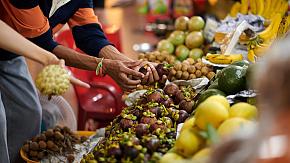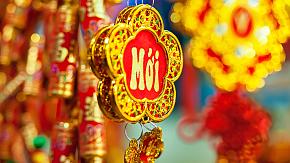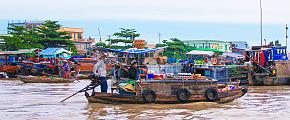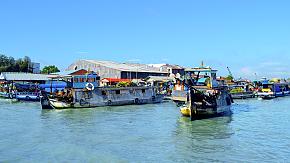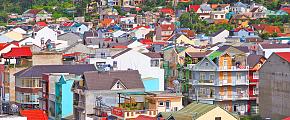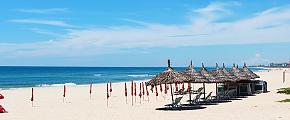Top 10 Vietnamese Foods: Pho, Spring Roll, and More
Visitors to Vietnam will soon find that the country doesn't just offer breathtaking natural sights such as the Halong Bay, and intriguing cultural and historical attractions, but also some of the most mouthwatering foods in the world. To help you narrow down a myriad of options, here will recommend 10 of the most unmissable foods you should try on your tour in Vietnam. Some of them (like phở, bánh mì, and bún chả) are so popular that you may even find them in your home country, but it would be quite special to enjoy them at their source.
- Vietnamese Phở: Noodle Soup
- Gỏi Cuốn: Vietnamese Spring Roll
- Bánh Cuốn: Vietnamese Steamed Rice Rolls
- Bánh Mì: Vietnamese Sandwich
- Chè: Vietnamese Sweet Desserts
- Bún Chả: Grilled Pork with Rice Vermicelli Noodles
- Bánh Xèo: Crispy Vietnamese Crêpes
- Cơm Tấm: Broken Rice with Grilled Pork
- Chả Cá: Grilled Fish with Turmeric and Dill
- Lẩu: Vietnamese Hot Pot

Vietnamese Phở: Noodle Soup
Cheap and tasty, this noodle soup is the most ubiquitous Vietnamese food in Vietnam. Originating from northern Vietnam in the late 19th century or the early 20th century, phở (pronounced "fuh") made its way into the mainstream cuisine and become Vietnam's national dish and is now popular around the world from the US to Europe. Still, what better place to enjoy than in its home?
Vietnamese Pho consists of flat white rice noodles in chicken or beef broth. The dish is served with thin slices of chicken or beef and usually accompanied by Thai basil, coriander, lime, chili, green onions, etc. with which the guest can season the soup to their own taste. It has balanced tastes of sweet, sour, salty, and spicy. Good phở broth is clear but flavorful and can take several hours to cook, using spices like cinnamon and anise.
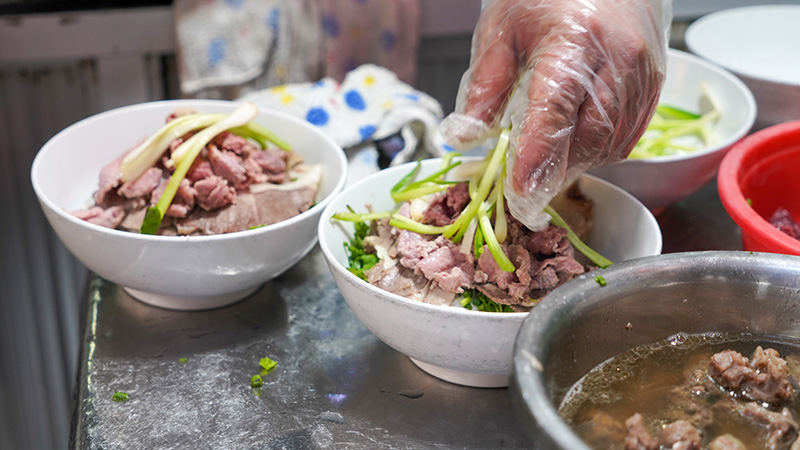 Vietnamese Pho
Vietnamese Pho
There are two basic types of phở in Vietnam: phở bò (beef), whose broth is made by simmering beef bones, oxtails, and flank steak, and phở gà (chicken), whose broth is made by simmering the whole chicken. Of course, there are meat-free options like vegetarian and tofu phở which you can find in major cities such as Hanoi and Saigon (Ho Chi Minh City). Besides, phở varies from region to region: northern Vietnamese favor saltier soup and use more black pepper and ginger, whereas people in the south, prefer sweeter soup and add more chilies and fresh produce such as bean sprouts.
When eating Vietnamese phở, keep your hands occupied. Hold your chopsticks in your dominant hand and the soup spoon in the other. Start with the broth:drink it slowly to take in the rich flavor. It's alright to slurp as it means you're enjoying it and it's a sign of compliment to the cook. Next comes seasoning: squeeze lime, put in some fish sauce, or sprinkle a little black pepper. (Skip this step if the broth is already good). Add the vegetable garnishes with your chopsticks and press them to the broth. If the leaves are too big, tear them into pieces before adding. Finally, mix all the ingredients evenly and it's time to treat your taste buds.
Gỏi Cuốn: Vietnamese Spring Roll
Light, refreshing and wholesome, gỏi cuốn or Vietnamese spring roll, is listed as one of the world's 50 best foods by CNN. This appetizer is traditionally prepared by wrapping boiled pork, shrimp, fresh herbs, vegetables, rice vermicelli, and other ingredients in rice paper. It is served cool, with a delicious sauce like peanut sauce, hoisin sauce, or fish sauce for dipping, making it a great snack to eat during Vietnam's hot summer months.
You will find different varieties of gỏi cuốn in Vietnam. Aside from pork and shrimp, other popular fillings include fish, pan-fried seafood, beef, sausages, egg and even tofu (for vegetarians). The name gỏi cuốn, meaning "salad rolls," is normally used in southern Vietnam. In the north, it is called nem cuốn ("grilled rolls"), while in central Vietnam, they are simply called "paper rolls".
To enjoy gỏi cuốn, start by dipping the rice paper in water before laying it flat on a plate. Then place the fillings (pork, shrimp, herbs, vegetables, etc.) on the rice paper and roll it up. Dip the roll in the sauce and eat it right away.
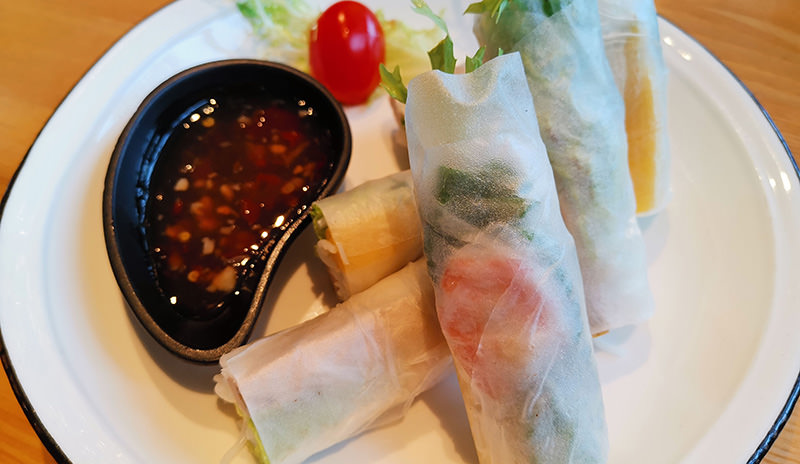 Gỏi cuốn
Gỏi cuốn
Bánh Cuốn: Vietnamese Steamed Rice Rolls
A popular street food mainly served for breakfast in Vietnam, bánh cuốn or Vietnamese steamed rice rolls are thin sheets of steamed rice batter stuffed with seasoned ground pork and minced wood ear mushrooms. The dish is normally served with crispy fried shallots, a variety of fresh herbs and vegetables, sweet fish sauce, and optional sausages.
What makes bánh cuốn so appealing is not only its delicious taste but also the way it is made. It requires special skills to make these extremely thin and translucent sheets of rice batter and watching the process is mesmerizing. A scoop of rice flour-based batter, full of the comforting flavor of freshly cooked rice, is evenly spread onto a steamer, then it is covered with a lid and steamed to perfection (usually in a matter of seconds). Finally, the cook uses a wood or bamboo stick to skillfully lift the rice sheet off the steamer and carry it onto a tray to stuff it with minced pork and mushroom.
Eating bánh cuốn is easy. Just dip a rice roll into the sauce.
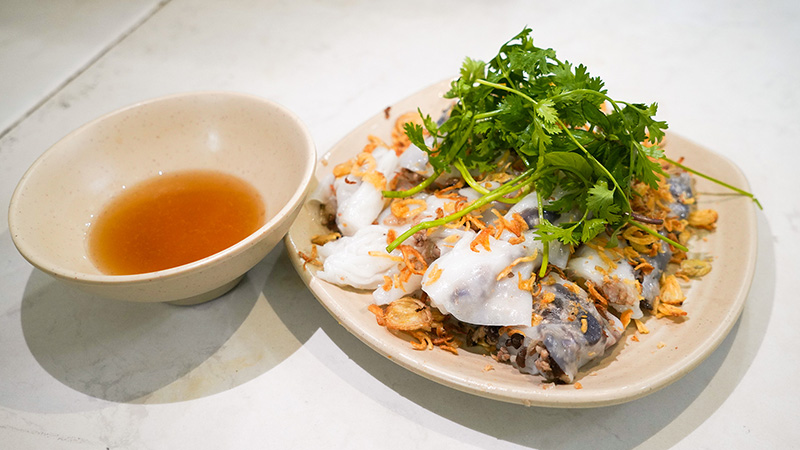 Bánh Cuốn
Bánh Cuốn
Bánh Mì: Vietnamese Sandwich
Heavily influenced by the French food tradition, bánh mì is the most famed Franco-Vietnamese culinary marriage combining flavors, tastes, and ingredients from the two countries. It is popular around the globe and regarded as one of the best sandwiches in the world. Though literally meaning just plain baguette or bread, bánh mì commonly refers to a Vietnamese sandwich consisting of a split baguette stuffed with meat such as pork or chicken, and pickled vegetables (like carrot and daikon) and garnished with cucumber, cilantro, and jalapeno. You'll also enjoy other versions of bánh mì such as those filled with tofu or egg, depending on which part of the country you're in.
The bread plays an important part in the taste of bánh mì. The crust should be crispy while the interior should be soft. Unlike the French baguette, the dough for making bánh mì is a mixture of rice flour and wheat flour instead of just wheat flour because wheat is not produced in Vietnam. Besides, the crust of bánh mì is also more brittle than that of the French baguette.
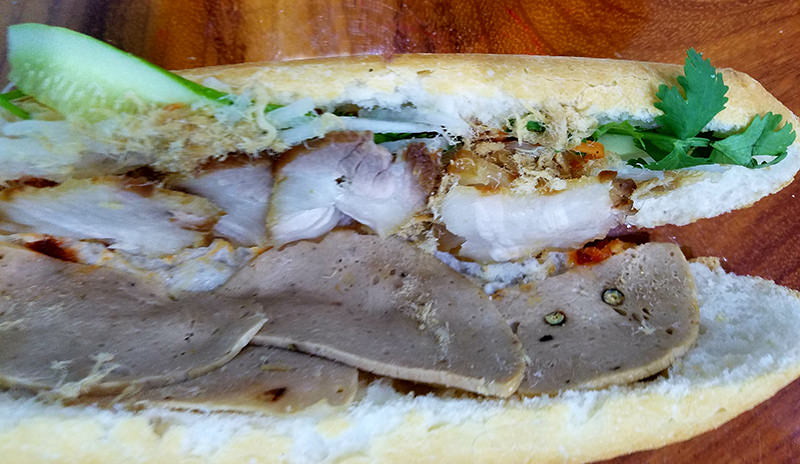 Bánh mì
Bánh mì
Chè: Vietnamese Sweet Desserts
If you have a sweet tooth and love desserts, you are spoiled for choices in Vietnam. The Vietnamese word for sweet desserts is "chè" which also includes any traditional sweet soup, beverage, and pudding.
There are many variations of chè, which can contain anything from kidney beans to sticky rice, grass jelly, tapioca fruit, and coconut cream. Some of the most popular chè desserts are chè ba màu (three colored dessert) that consists of mung bean paste, red beans, and jelly, topped with coconut milk, chè băp (sweet corn pudding), chè trôi nươc (sweet glutinous rice dumplings), and chè bà ba (sweet potato, taro and cassava dessert)
They are served either hot or cold, usually sold in plastic cups or mugs at street stalls and grocery stores. Chè can be found any time of the year, but it is best enjoyed with a scoop of crushed ice on hot days.
Bún Chả: Grilled Pork With Rice Vermicelli Noodles
A simple dish consisting of grilled pork belly, rice noodles picked vegetables and herbs, bún chả is a specialty of Hanoi and an all-time favorite of the local people. It can easily be found at food stalls and street restaurants across Hanoi. In 2016, the dish became internationally famous soon after the CNN show "Parts Unknown" in which the former US president Barack Obama enjoyed it as dinner with late celebrity chef Anthony Bourdain. The restaurant where Obama ate the dish is Bún Chả Hương Liên,located in the Old Quarter of Hanoi, and the dishes he ordered are listed as Combo Obama on the restaurant's menu.
Bún or rice vermicelli should be thin, soft and chewy. They are served in a separate bowl. Cha is the meat of the dish, usually grilled pork served with the broth. The dipping sauce for bún chả is made from fish sauce, vinegar, and sugar. The taste varies from restaurant to restaurant as each chef may use different proportion of the ingredients. Just like many other Vietnamese dishes, bún chả comes with a basket of vegetables and herbs, including lettuce, Thai basil, fish mint, culantro, and cilantro/coriander.
Eating bún chả is easy! Just dunk everything (rice vermicelli, pork, and vegetables) into the bowl of sauce before you eat. Another way is to use a big leaf of lettuce to wrap a bit of everything, dip them into the sauce and take a big bite, which is common in southern Vietnam.
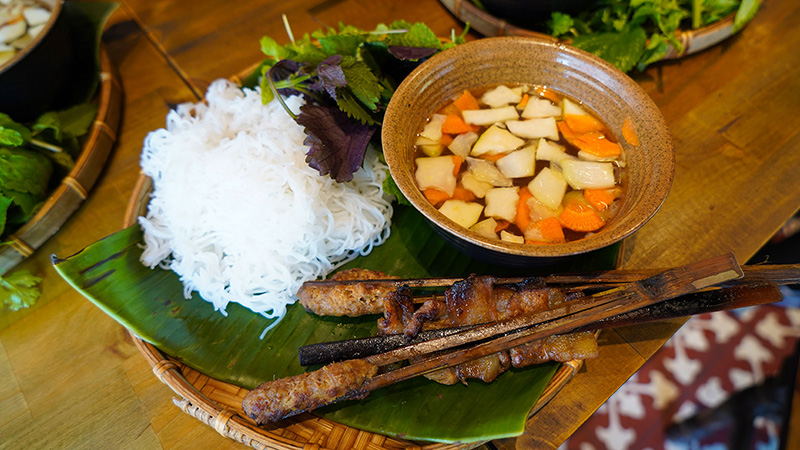 Bún Chả
Bún Chả
Bánh Xèo: Crispy Vietnamese Crêpes
When you wander through the streets in Vietnam, you can take in pleasant smells from a large variety of street food. There is one street food that you can not only smell but also hear its sound and that is bánh xèo, Vietnamese sizzling crepe-like pancake. Bánh xèo features crunchy crepe-edge, savory fillings, sweet and sour dipping sauce.
The Vietnamese call it bánh xèo (sizzling pancake) because of the noise it makes when the batter is poured into the hot skillet. The batter is made from a mixture of rice flour, coconut milk, and turmeric powder, giving the crepe a golden yellow hue. Bánh xèo is most commonly stuffed with pork belly, whole shrimp, diced green onion, bean sprouts, and mung beans, and served with lettuce, mint, Thai basil, fish mint and condiments such as peanut sauce.
There are two ways to eat bánh xèo. One is simple: just put pieces of pancake (with stuffings) and the herbs in the sauce and mix it with your chopsticks. The other is more interesting: tear off a piece of pancake and put it on the lettuce leaf served, then add your selected vegetables and herbs and roll the leaf neatly. Now that you have the roll, it's time to dip it into the sauce and enjoy it.
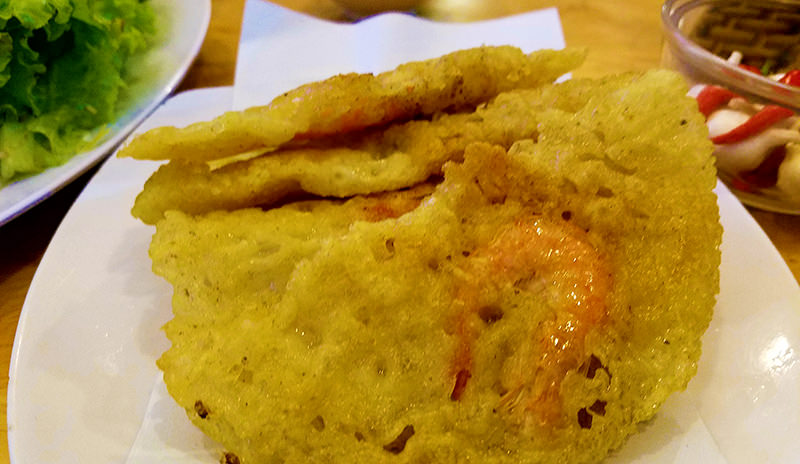 Bánh xèo
Bánh xèo
Cơm Tấm: Vietnamese Broken Rice With Grilled Pork
Cơm tấm is a signature dish of Ho Chi Minh City, Vietnam's economic hub. It is made from broken rice that traditionally couldn't be sold, and was eaten by Vietnamese farmers themselves or used to feed animals. Com means cooked rice, and tam refers to fractured rice grains. Over the years, the resourceful Vietnamese people have turned these imperfect rice grains into a delicious dish that can be found on almost every street in Ho Chi Minh City.
Though smaller than normal rice, the broken rice tastes like normal rice and its texture is similar. A plate of cơm tấm may come with a great many toppings, such as grilled pork chop, pork skin, steamed pork, deep-fried fish patty, fried egg, etc. Fragrant accompaniments like mint, lime, and spring onions are usually used to garnish the dish. Besides, you may also find pickled vegetables, sliced cucumber and tomato, and a dipping sauce accompanied with the dish.
The whole dish may take hours to prepare, but it is served fast. You can usually enjoy it in just about a minute after order. And that reflects the fast pace of city life in Ho Chi Minh; the Saigonese need food fast and filling to get through the day.
Chả Cá: Grilled Fish With Turmeric and Dill
Chả cá or grilled fish with turmeric and dill is one of the most famous dishes of Hanoi. In the city's Old Quarter, there's even a street dedicated to the dish, called Chả Cá Street where you find many restaurants that specialize in chả cá, including Chả cá La Vong, one of the oldest eateries in Hanoi. Now the street is a popular stop for locals and tourists alike.
To make chả cá, sliced snakehead fish is first marinated with a mixture of turmeric, garlic, shallot, galangal, salt, sugar and fish sauce for at least an hour. It is then grilled and fried in oil with dill before being served. At traditional chả cá restaurants, when you order the dish, you will get a hot pan with marinated fish, and accompaniments like rice vermicelli, herbs, roasted peanuts, chili, and mắm nêm (a fermented shrimp paste). When the fish and the dill fry in the pan, the turmeric marinade will give them a golden shade, and then you can soak up the aroma of the herbs filling the air. Once it's sizzling, it is ready. For the best enjoyment, take bite-sized slices of fish with a little boiling oil from the pan, and eat it with the accompaniments (rice vermicelli, peanuts, coriander, dill, spiced fresh green onion and mắm nêm).
Lẩu: Vietnamese Hot Pot
Lẩu is the Vietnamese hot pot similar to that of the Chinese, consisting of a simmering metal pot of stock placed in the center of the dining table. It's a great dinner party dish and a favorite for the Vietnamese in cold weather. A great thing about the meal is that you can add any combination of meat and vegetables.
The broth, which is typically made from chicken bones or pork ribs, is precooked before you order. It is kept boiling in the pot so that you can cook your selected food in it very quickly, usually in just a few minutes. Around the pot is a great variety of foods such as sliced beef, fish, chicken, pork, or mutton, rice vermicelli, dumplings, fresh vegetables, tofu skin, mushroom, seafood, etc. Pick the stuff you like and soak it in the stock until cooked, then dunk it into the aromatic dipping sauce made from lime, chili, garlic, and salt before eating.
Travel With Odynovo to Enjoy a Wonderful Food Tour
Feeling inspired to try these delicious dishes and many others? A custom-made, private tour combining culinary exploration and sightseeing is a great way to explore Vietnam and other countries in the region. Simply send us an inquiry telling your preferences and needs, and your personal travel consultant from Odynovo will be in touch with you with a custom itinerary in no more than 24 hours. He or she will help you refine the plan until you're 100% satisfied.
Quick Question
Related Posts You May Like
What Our Clients Say
Explore the latest verified reviews of Odynovo's travel services on Tripadvisor, Google, Trustpilot, Product Review and more trusted platforms.

